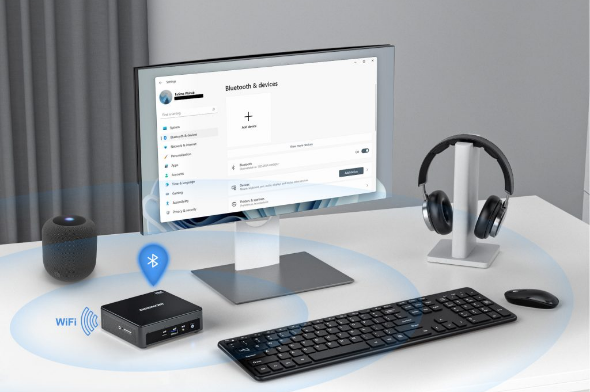Connection to DriversCloud Create a DriversCloud.com account Reset your DriversCloud.com password Account migration
How to choose and buy a desktop computer online: your complete guide
Article sponsored by inmac
Buying a desktop computer online can seem complicated and time-consuming. However, by learning more about the technologies available, you'll be able to do it yourself and save money in the process.
Buying a desktop computer online can be both an exciting and daunting experience. With a multitude of options available on the market, it's essential to make the right choices to get the configuration that meets your specific needs. In this article, we'll guide you through the process of selecting and purchasing an online desktop computer.
1. Define your needs
The first essential step is to understand your needs. What do you intend to do with your new computer? Is it for office use, gaming, video editing, simple web browsing or programming? The answer to this question will greatly influence your choice. Configurations vary according to use, so determine your priorities.
2. Choosing the right processor
The processor is the brain of your computer. Opt for a powerful processor if you're planning resource-hungry tasks such as gaming or graphic design. Intel Core i5 and AMD Ryzen 5 processors, for example, are good choices for versatile use.
3. Select the right graphics card
If you're a passionate gamer or work in fields requiring advanced graphics, a dedicated graphics card is a must. NVIDIA GeForce RTX and AMD Radeon RX cards are among the most popular for gaming and content creation.
4. Random Access Memory (RAM)
An adequate amount of RAM is crucial to the fluidity of your system. For office use, 8 GB RAM is generally sufficient, while advanced users will prefer 16 GB as a minimum, while 32 GB is increasingly suitable for resource-hungry uses (Photoshop...).
5. Storage
Choose between a mechanical hard disk drive (HDD) or an SSD. SSDs are faster, but generally offer less storage capacity for the same price. A common compromise is to use an SSD, 2.5″ or NVMe M.2, for the operating system and applications, combined with a mechanical hard disk drive (HDD) for mass storage.
6. Operating system
Make sure the computer comes with an operating system, whether Windows, macOS or Linux. Also check its compatibility with the software you plan to use. However, more experienced users will be able to install an OS directly on the PC they have purchased.
7. Connectivity and ports
Check connectivity, including USB, HDMI and audio ports. Make sure there's enough for your needs. Wireless and Internet connectivity should also be considered. Some computers use 2.5 Gbps network cards, and fiber optic operators offer boxes with this same standard. Using such ports gives you greater speed when using the Internet or playing video games.
8. Brand and reliability
Look for reputable brands known for their reliability. Asus, HP, Lenovo and their variants (ROG, Omen / Victus, Legion) are manufacturers renowned for the quality of their hardware and their reliability. The best solution is to consult online reviews and ask a professional for recommendations.
9. Budget
Set a realistic budget based on your needs. Bear in mind that desktops often offer better value for money than laptops, and are generally more powerful for the same price.
10. Buy online
Once you've identified the configuration you're looking for, you can browse the web to find websites that offer you the chance to buy a desktop PC online, and which may be able to guide you in narrowing down your choice.
11. Warranty and after-sales service
Check the warranty period and after-sales service options. An extended warranty can give you extra peace of mind, even if the price is often, in our opinion, a little high.
12. Delivery and installation
Think about logistics. How will the computer be delivered and installed in your home? Make sure the vendor offers secure delivery and that you have the skills to place and wire your PC to your various peripherals (screen, keyboard, mouse, etc.).
Conclusion
Buying a desktop computer online can be a rewarding experience if you follow these steps. Define your needs, choose quality components, set a realistic budget, and buy from a reputable vendor. If you've made the right choice, you'll get a high-performance desktop that will meet your needs for many years to come.
By following these tips, you're now ready to embark on your online desktop buying adventure. Don't forget to do thorough research and ask questions if necessary. French Days or sale periods offer the opportunity tosave a little money, often enabling us to buy a computer a hair above our needs at the same price. Happy shopping and enjoy your new computer!












